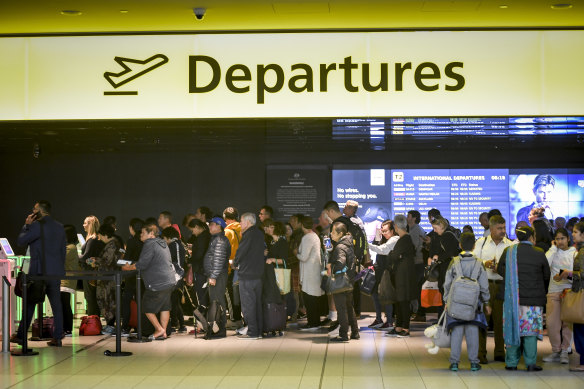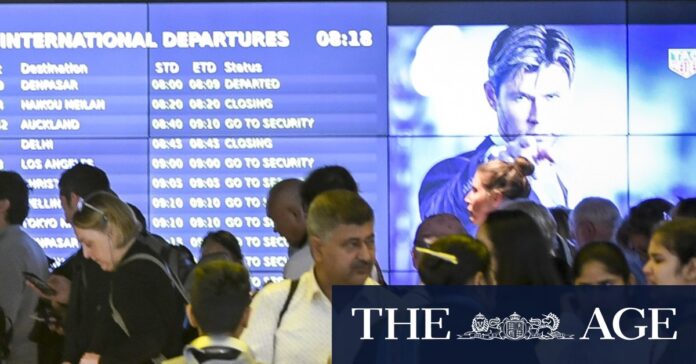[ad_1]
A record number of international flights landed or took off from Melbourne Airport in December, as inflationary pressures failed to dampen the demand for travel over the peak holiday season.
A total of 4976 international flights passed through Australia’s second-biggest city to round out the last month of the year, up from its pre-COVID-19 pandemic record of 4832 flights reported in January 2020.

A record number of international flights transited through Melbourne Airport in December while domestic capacity continues to lag behind pre-COVID-19.Credit: Eddie Jim
Melbourne became the first Australian airport to exceed its pre-pandemic capacity for international travel in November, but its domestic capacity continues to lag by 5 per cent on 2019 levels, with just over 2 million passengers over the month.
The growth was buoyed by key sporting events including tennis Grand Slam the Australian Open and Cricket’s Boxing Day Test, as well as new routes launched by airlines such as Air India’s direct services to Mumbai and Jetstar’s flights to Fiji.
Melbourne Airport’s boss, Lorie Argus, said Australians had continued to prioritise international travel despite increased cost-of-living pressures which have savaged other industries over the summer, such as retail and entertainment.
“These flights also provide local exporters with increased opportunities to send goods into foreign markets, with an average daily international flight worth $154 million to the Victorian economy,” she said.
Loading
Data from Flight Centre’s corporate travel division shows the Australian Open has driven business types to flock to Melbourne over December. Business bookings to Melbourne exceeded usual corporate darling Sydney by 5 per cent over the month. Corporate Traveller said bookings for flights and hotels over the Grand Slam were more than 700 per cent higher than last year’s Boxing Day Test, 70 per cent higher than the AFL grand final and 50 per cent higher than the Melbourne Cup.
The head of Corporate Traveller, Tom Walley, said business bookings had increased in length since before the COVID-19 pandemic, with longer domestic trips of between four and six days up 4.6 per cent in December.
“There’s been an ever-increasing drive towards extended ‘bleisure’ stays, whereby travellers weave
short breaks into a work trip, with an increased in trips of four days or more, and this is particularly
evident over summer,” Walley said.
The Business Briefing newsletter delivers major stories, exclusive coverage and expert opinion. Sign up to get it every weekday morning.
[ad_2]
Source link


